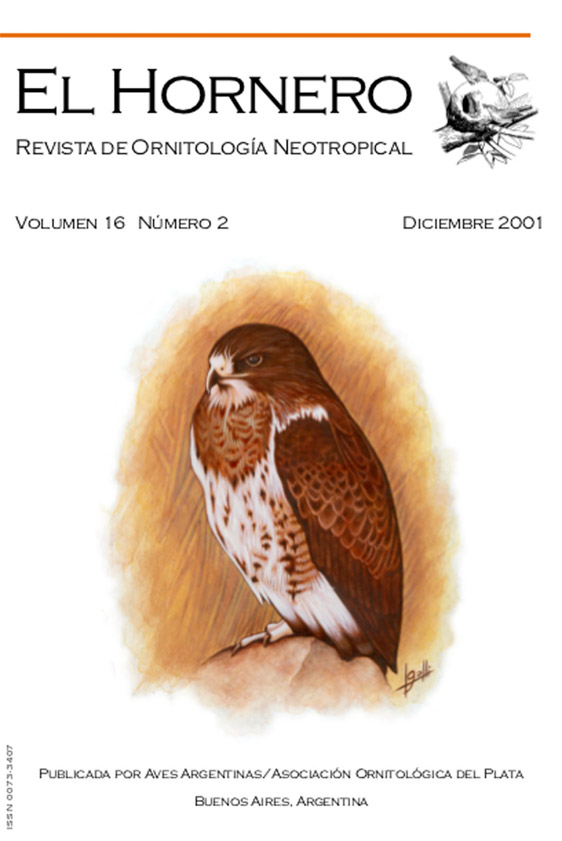Resumen
Describimos un equipo electromecánico económico para fotografiar depredadores de huevos en nidos artificiales. El equipo consta de tres partes: un disparador en el nido, un accionador del disparador de la cámara fotográfica y un desactivador del equipo. Las ventajas de este equipo son su bajo costo, el uso de una fuente de alimentación común y que incluye un circuito eléctrico muy sencillo de armar. Con este equipo identificamos cinco especies depredadoras de huevos (cuatro aves y un mamífero) en el desierto del Monte central, entre las cuales destaca Upucerthia certhioides, por ser la primera vez que se la identifica atacando nidos. Se indican algunas precauciones para evitar la activación del equipo sin la presencia del depredador y para obtener imágenes de buena calidad.
Referencias
BAYNE EM Y HOBSON KA (1997) Temporal patterns ofpredation on artificial nests in the southern borealforest. Journal of Wildlife Management 61:1227ñ1234
BELLES-ISLES JC Y PICMAN J (1986) House Wren nest-destroying behavior. Condor 88:190ñ193
CHRISTMAN BJ Y DHONDT AA (1997) Nest predation inBlack-capped Chickadees: how safe are cavitynests? Auk 114:769ñ773
GARDNER JL (1998) Experimental evidence for edge-related predation in a fragmented agricultural land-scape. Australian Journal of Ecology 23:311ñ322
HERN¡NDEZ F, ROLLINS D Y CANTU R (1997) An evalu-ation of TrailmasterÆ camera systems for identify-ing ground-nest predators. Wildlife Society Bulletin25:848ñ853

Esta obra está bajo una licencia internacional Creative Commons Atribución-NoComercial 4.0.





